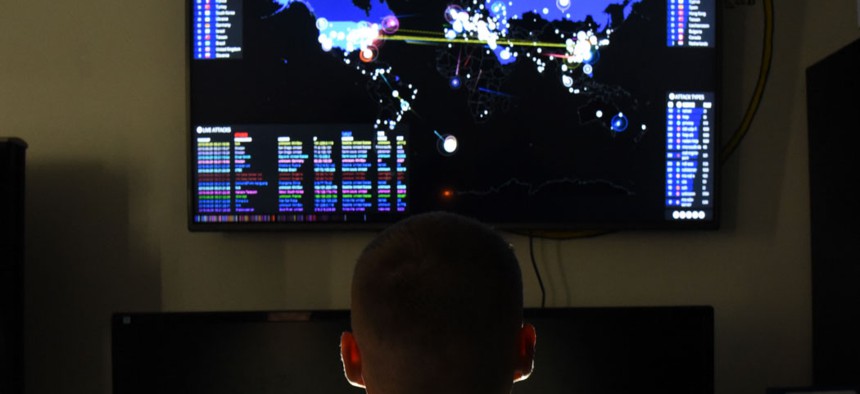DOD, Silicon Valley team up on 'lean startup' approach
Stanford University initiative looks to streamline DOD and intelligence agency tech acquisition.
A Defense Department-sponsored lean startup initiative is examining new ways of developing technologies and deploying them faster in response to realities of asymmetrical warfare, in which agile terror groups can mount quick-strike attacks against superior but hidebound forces.
Organizers said the "Hacking 4 Defense" effort being run out of Stanford University's School of Engineering kicked off this week with eight teams. In the mold of lean startups, the teams were required to talk to 86 military and intelligence agency stakeholders before the class began. The idea was to ensure that team members gleaned insights about service technical requirements at the outset.
While similar DOD efforts involving Silicon Valley companies focus solely on technology development, organizers stressed the parallel requirement for streamlining acquisition and technology deployment as terrorist groups become more sophisticated. A goal is integrating lean startup practices into the current cumbersome national security procurement process.
"Terrorists today live on the net and they are all early adopters," stressed course founder and lean startup guru Steve Blank. "They are experts in leveraging Web 2.0 and 3.0," he said. "They can crowd-source designs, find components through eBay, fund through PayPal, train using virtual worlds and refine tactics, techniques and procedures using massive online gaming."
All this can be done "while we’re still writing a request for a proposal from within the U.S. government procurement and acquisition channels," Blank asserted.
Large Silicon Valley companies like Facebook, Google and data analysis software specialist Palantir Technologies are providing mentors for eight Hacking 4 Defense teams. More than 70 students applied for the course; 32 were selected.
Blank's approach emphasizes the need for entrepreneurs to get out of the conference room and interact directly with potential customers. In the case of Hacking 4 Defense, those "customers" include the military services and U.S. intelligence agencies.
In a blog post, Blank said course instructors worked with DOD and intelligence experts to come up with 20 problems the class could tackle. Among them is an exercise sponsored by the National Security Agency called "detecting catfishing." Catfishing involves assuming an online persona that conceals a person's true identity. The challenge for the Hacking 4 Defense teams is developing "a technique to score how likely it is that a given online persona is who they claim to be, and how that conclusion was reached."
Other technical challenges include developing techniques for gaining situational awareness inside a natural or manmade enemy sanctuary. The Army's 75th Ranger Regiment, the service's special operations branch, is sponsoring that effort.
Another challenge hewing closely to the lean startup model seeks to develop acquisition strategies for buying and deploying cheap, disposable and secure sensors for intelligence, surveillance and reconnaissance missions. The effort is sponsored by the Navy's Seventh Fleet, which includes up to 70 ships and 140 aircraft responsible for patrolling 48 million square miles of the Pacific and Indian oceans.
Several retired military officers are helping Blank and Tom Byers, a Stanford engineering professor, teach the course. Former Defense Secretary William Perry is serving as an advisor.
Other sponsors include the National Defense University's Center for Technology and National Security Policy and the Energy Department's Office of Advanced Manufacturing.
NEXT STORY: Air Force adds to deal for cyber weapon system




